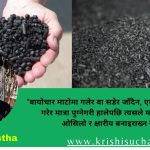System of Rice Intensification in the context of rice production in Nepal

Introduction
Rice (Oryza sativa) is the most important cereal crop followed by wheat and maize in Nepal. Cereal crops contribute about 90 percent of calorie intake and 50 percent of this comes from rice. In Nepal, rice is the primary source of livehood and income for more than two-thirds of farm households and it is deeply embedded in the country’s culture. It is cultivated traditionally through transplanting of 20-25 days old rice seedling into flooded field. It is grown in all three argo-ecological area namely terai, mid hills, and high hills in Nepal. In Nepal, there is huge yield gap in rice production due to some issues such as decline in soil fertility and losses of agricultural land for new construction, water scarcity, expensive labour, farmers are shifting towards new businesses, higher cost in agricultural input (fertilizer, seed, fuel). System of rice intensification (SRI) is a rice cultivation method which is only viable method to increase the production of rice within small area and it make better soil physical condition for the following crops.
System of rice intensification (SRI)
System of rice intensification is a climate-smart, agro-ecological method for increasing the productivity of rice and more recently other crops by changing the management of plants, soil, water and nutrients. It involves the use of certain management practices, which together provide better growing conditions for rice plants, particularly in the root zone, than those plants grown under traditional practices. The first SRI trial in Nepal were undertaken in 1998 by a government agronomist at the Khumaltar Research Farm in collaboration with the United States Agency for International Development CRPS program. According the benefits and advantages of SRI in increasing rice production and soil enrichment it was adopted in many areas of Nepal.SRI is based on its principles and its management practices under irrigated conditions.
SRI principle
It is mainly based on four main principles;
- Early, quick and healthy plant establishment.
- Reduced plant density.
- Improved soil condition through enrichment with organic matter.
- Reduce and controlled water application.
According to these principles, farmers can adapt some SRI management practices based on soil fertility, climate condition, labour availability, water management, access to organic input, etc. Some common SRI practices for irrigated rice production are;
1.Young seedlings: Seedlings are transplanted at two leaf stage, usually between 8-15 days old seedlings from the nursery to the prepared field. Young seedlings must be planted very carefully that the root tip is not left pointing upward.
2.Single seedling: Seedlings are planted singly rather than clumps of 3-4 together to avoid root competition and also to facilitate with more space, light and nutrient requirement of rice.
3.Wider spacing: Seedlings are planted in wider space for better growth and development of root. Usually square grid pattern (25×25 or more wider space) in good quality soil is recommended for planting.
4.Lesser seed rate: In this method, less seed rate is required about 5-8 kg/ha than other traditional method of cultivating rice.
5.Organic soil condition: Fully organic practice is done in this method instead of using chemical fertilizers, pesticides, weedicides, etc which harms the physical condition of the soil. Organic practice maintains the soil environment better and sustainable for the cultivation of other folipwed crops.
6. Irrigated soil: Mostly rice is cultivated traditionally in flooded water. But, in this method soil is kept moist but not flooded during vegetation period, ensuring more oxyen and nutrient available in soil for roots. Soil is allowed to dry until fine crack appears in the soil that allow oxygen to enter in the soil. Unflooded condition is maintained during vrgrtation period but from flowering to harvest flooded condition is maintained.
7.Conoweeding: In this SRI method weeding can be done by conoweeder. First weeding is done on 14 days after transplanting seedlings and weeding should be continued up to 40 days at 7-10 days interval. This practice of weeding seems to improve in soil structure and soil aeration, also increases the soil enrichment of Co2 near the root zone that increases the biological activities and soil microbes results in better nutrient availability in the soil and uptake by plants.
Advantages of SRI method
- Higher yield production in smaller area.
- Reduced the duration of harvesting.
- Enrichment in soil fertility.
- Less water consumer.
- Enhanced soil physical condition.
- Reduced the use of chemical substances.
Challenges in adopting SRI method
Conclusion: SRI is the one of the best method for increasing the production of rice within small cultivated area. As it is organic method agriculture maintains the soil physical conditions and improves the productivity of following crops (wheat and maize). According to its potential it is adopted in many areas of Nepal.
Writer: Laxuman Bhattarai (Student, Bsc. Ag IAAS Paklihawa Campus)

 दिल्लीको होटलमा बसेर क्यानडा र अमेरिकामा मानव तस्करी
दिल्लीको होटलमा बसेर क्यानडा र अमेरिकामा मानव तस्करी  अनलाइन जुवा खेलाएर काभ्रेका अनिलले गरे दुई अर्बको कारोबार
अनलाइन जुवा खेलाएर काभ्रेका अनिलले गरे दुई अर्बको कारोबार  मुख्यमन्त्री सोडारीले विश्वासको मत लिन सुदूरपश्चिमको प्रदेश सभा बैठक आव्हान
मुख्यमन्त्री सोडारीले विश्वासको मत लिन सुदूरपश्चिमको प्रदेश सभा बैठक आव्हान  अफगानिस्तानमा बाढीबाट ३१५ भन्दा बढीको मृत्यु
अफगानिस्तानमा बाढीबाट ३१५ भन्दा बढीको मृत्यु  सुँगुरको मिर्गौला प्रत्यारोपण गरिएका रिचर्डको निधन
सुँगुरको मिर्गौला प्रत्यारोपण गरिएका रिचर्डको निधन 


